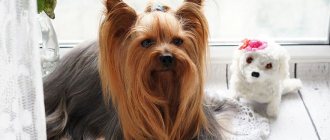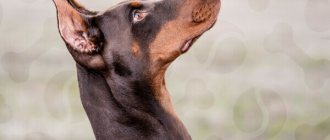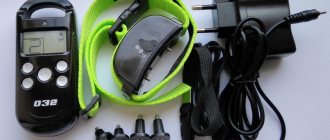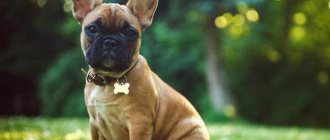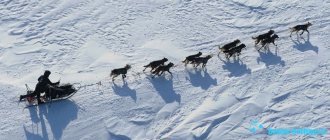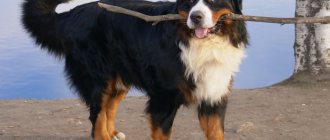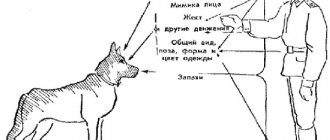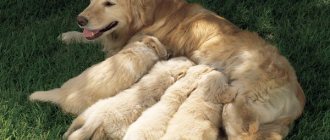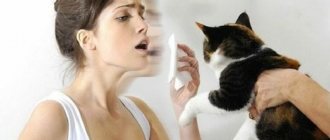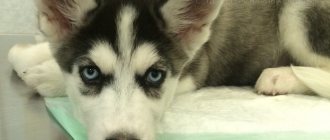Dog trimming is a grooming procedure aimed at removing thinning hairs in wire-haired breeds. If your pet has coarse hair, then for his health you will have to familiarize yourself with the nuances of this process. Otherwise, after 4-8 months the pet’s appearance will be disheveled and repulsive.
What is the trimming procedure?
During the procedure, the animals' fur is thinned, removing dead and weakened hairs. They are plucked out with tools or by hand.
Why do you need to trim your dog?
The procedure is compared to artificial molting. If the dog is trimmed in a timely manner, then he will have:
- blood circulation is stimulated;
- new hair growth is activated;
- the quality of the coat improves;
- a neat appearance is maintained.
Timely care of coarse hair preserves its shine and brightness, and also serves as a prevention of tangles and dermatitis. This technique is only used on a limited number of breeds due to their natural shedding patterns.
Features of some breeds
In the process of evolution, owners of coarse wool have lost the ability to independently renew their coat. Hairs that have gone through the entire life cycle do not fall out, but continue to accumulate in the fur coat. This leads to tangles, skin diseases and an unkempt appearance.
In addition to wire-haired animals, such treatment is necessary for purebred dogs with a mixed coat type. Most representatives belong to hunting breeds: terriers, schnauzers, griffons and wire-haired dachshunds. The fur coat of such animals consists of 2 types of hair:
- hard and long guard hair that protects from the effects of the external environment;
- soft and short undercoat that retains heat and inhibits the penetration of moisture onto the skin.
Previously, their fur was cleaned with the help of bushes and thorns encountered on the way to prey. Over time, dogs were increasingly purchased as companions, which reduced outdoor activities and prevented the natural removal of dead hair.
The hairs remaining inside the cover interfere with the growth of new hairs and disrupt air circulation. Due to constant humidity, the dog develops fungi, bacteria or parasites.
Is the procedure a replacement for a haircut?
Dog grooming is often confused with grooming, but the two procedures produce different results. They are not interchangeable and are designed for different coat types.
If you trim a wire-haired pet with regular scissors, its hair will begin to resemble puppy fluff. This happens because the skin has thinner hairs. When the hard top is cut off, the weaker base remains along its entire length. It is almost impossible to return the previous coat structure, so not only exhibition participants, but all other classes are trimmed.
HAIR OF DOGS
The coat of wild dogs has three types of coat length: • normal, like a husky; • shortened, like a Staffordshire Terrier; • elongated, like a Keeshond.
In domesticated and newly formed dog breeds, three main types of breeds are distinguished according to the type of coat:
• Short-haired dogs – characterized by very short, smooth, straight hair on all parts of the body. The undercoat is absent or underdeveloped. • Long-haired dogs – have long, silky outer hair on the neck and body. The coat of long-haired dogs can be straight, wavy or curly. Poodle-type dogs have long, wavy hair all over the body, and the coat may fall in waves, curl in cords, or mat in felt-like ribbons. • Wire-haired dogs are completely covered, from muzzle to tail, with long, coarse and protruding hair. In many hunting terriers, the hair is thickened towards the upper end and has a bend or break in front of the thickened part, due to which the hair forms a dense protective “shell” on the dog above the undercoat.
Types of trimming
Grooming salons offer several types of procedures. Depending on the processing method, it can be:
- Manual (plaking) and mechanical (stripping)
. The fur is removed with bare hands or using tools.
- Light and full
. The first option is more gentle. The pet's fur is thinned evenly, removing the top layer of protruding hairs. The remaining hairs are trimmed with a machine. With monthly visits to the groomer, 15% of the hair is removed, and with quarterly visits - 30%. The second option is suitable for more advanced cases, when the interval between events is more than 4 months. Dead guard hairs are plucked out completely, and the undercoat is trimmed to a minimum length or removed.
They also start from goals. Depending on the purpose, there are 3 types:
- exhibition, held a couple of weeks before the performance and giving a spectacular appearance;
- hygienic, carried out every six months during molting;
- cosmetic, necessary to maintain neatness between molts.
“Plucking” sounds a little scary, but with frequent visits to the groomer, the pet relaxes so much that he calmly falls asleep on the work table. Once you learn how to trim a dog, you will understand that it is not scary at all and is very effective.
Description of the process by stages
If there is no experience, the animal will worry. The manipulations will have to be carried out in stages, taking breaks between approaches. How to trim dogs with step-by-step instructions:
- Prepare a flat work surface and place your pet on it. Remember that hair that is too wet will slip out of your hands. Bathing is carried out strictly after the end of the process.
- Carefully comb the coat according to the hair growth using a wide-toothed comb and a slicker brush.
- Unravel any tangles you find with your fingers and gently comb them through with a flat comb.
- Start plucking hairs, moving from the back of the head along the spinal column towards the tail. This zone is less sensitive, so the animal will have time to calm down and get used to the manipulations being performed.
- When plaiting, gradually grab thin strands with your thumb and forefinger and pull them out in the direction of hair growth. When stripping, use a trimming knife.
- Once you're done with the back, move on to the sides. They are trimmed moving from top to bottom. Next, work on your hips and shoulder blades. The areas below the hock and elbow joints are not treated.
- Lastly, move on to the head. It’s safer to use your hands here so as not to injure your face with a knife. Hair is pulled out from the ears with tweezers.
The pet's anxiety during manipulation is relieved with a light massage. Unlike stroking, which encourages unwanted behavior, massage movements relax and distract from what is happening.
At the very end, the animal is washed in warm water and dried with a hairdryer. The remaining hairs are removed with hands or tweezers. Mild discomfort is possible when treating the inner thigh, armpits, head and neck.
In the salon or at home?
Home care is possible, but less safe. Working on your own, you can accidentally injure your dog, pull out new hairs or form bald spots. If you have a desire to learn, entrust the first treatment to a groomer and watch his actions. It is possible to master the technique, but it will take time.
Grooming salons guarantee high-quality results and the safety of four-legged visitors. Some craftsmen work from home. This option is suitable for shy pets. Usually the excitement goes away by the third session.
If you need to prepare before an exhibition, contact a groomer. Any error that affects the breed standard will result in a lower score.
Haircut or trimming: what are the differences?
Proper care of an animal's coat is practiced mainly by breeders of champion dogs who take part in exhibitions. Other owners believe that a haircut can get by. It's a delusion.
Cutting the hair at the base does not solve the problem, but makes it worse. The guard hair, which makes up the bulk of the upper cover and needs trimming, consists of two parts, the lower one is thin and soft, the upper one is dense and hard. Shaving off the top leaves a thin root structure that continues to grow.
Over time, dogs that are clipped lose their coat quality. Growing hair looks like fluff, gets dirty faster and becomes tangled. After cutting, the hair structure is not restored. With proper care, that is, by contacting a groomer, it is possible to slightly change the top coat, but it is impossible to completely reverse the process.
Short-haired dogs of wire-haired breeds do not take prizes at exhibitions and, in general, differ from their counterparts in worse appearance.
It is recommended that hair care for cocker spaniels, Yorkies, schnauzers and other representatives of hunting breeds be left to specialists from the first days the animals live in the house.
It is important to understand that cutting is a cosmetic procedure, and plucking is a hygienic procedure.
Required Tools
To create a home salon, you will need professional tools. Most often, groomers use products from American, Belgian and Italian brands. The high price of the equipment is explained by their quality and ergonomics.
Working surface
For independent manipulations, you will have to purchase a folding table with anti-slip material. Thanks to the rough surface, the dog feels confident and less worried.
Some designs are equipped with a bracket that secures the animal by the collar. This table can be used not only for home grooming, but also at exhibitions.
Combs
To get the job done you will need several comb options. They all have different goals:
- Pukhoderka
. Essential for removing dead hair, styling during blow-drying and daily combing. Choose a tool with a small surface - 5x10 cm.
- Metal comb
with fine and large teeth
. Suitable for combing limbs and skirts. Unlike Furminator, it is safe for the undercoat. - Rake brush
. Stimulates blood flow and removes accumulated contaminants well.
All these combs are used in combination. This approach allows you to achieve a healthy and shiny coat.
Knives
Trimming knives are selected individually. You can start not only from skills, but also from the ability to use one or another hand. The models produced are designed not only for right-handers, but also for left-handers.
The main task of this tool is to carefully pluck the hair without cutting it. To do this, the steel blade is dulled. Knives are produced in 4 varieties:
- face – used to work with the muzzle;
- coarse – suitable for working with large dogs with thick or heavily overgrown fur coats;
- medium – used for processing and shaping the body;
- fine and extra-fine – designed for final processing, working with undercoat and short hairs on the ears, neck and head.
Beginners only need two knives: with fine and medium teeth. The first is suitable for more sensitive areas, and the second is for working with a large part of the body.
Powder and stone
Before manipulation, the animal is treated with a special powder. It exfoliates dead particles, eliminates slipping and normalizes grip. Instead, it is acceptable to use grooming crayons or baby powder.
Trimming a puppy is not complete without trimming stones. They act similarly to knives, but are used at the very end. Thanks to the porous and loose structure of the stone, which resembles pumice, all dirt and remaining hairs are carefully removed from the body.
Fingertips
Externally, the fingertip resembles a thimble and is used for similar purposes. It is necessary to protect against damage and prevent the formation of calluses. Its textured surface provides a smoother grip when hand-cut. For frequent manipulations, reusable silicone products are suitable.
Care products
Upon completion, the animal is washed with a veterinary hypoallergenic shampoo designed for wire-haired breeds. For easier combing, use balms. If irritation occurs after plucking, the skin is lubricated with baby cream, oils, Miramistin or Chlorhexidine.
Trimming frequency
The frequency depends on the goals, size and breed of the pet. The smaller the dog, the sooner it is accustomed to handling. The first coat renewal is carried out at 4 months. Larger representatives can defer up to six months. Untimely plucking can result in thinning of the coat, so consult a groomer before the first procedure.
The most favorable time is spring and autumn. Seasonal molting occurs during these periods. When performing light equipment, trimming is carried out quarterly, and with full equipment - twice a year. The timing may change during exhibitions, since for a neat appearance no more than 2 months should pass from the date of the last procedure.
You can determine the need for hair removal yourself. Place your fingers into the animal's fur and carefully remove them back. If there are hairs on your hand, it’s time to contact a groomer.
When purchasing a purebred pet, make sure to provide it with the care it needs. Trimming cannot be replaced by a haircut and it is not always possible to do it yourself. If you are not ready to learn and do not have the opportunity to entrust all the worries to the groomer, choose a less demanding breed.
The article is for informational purposes only. Contact a specialist!
DOGS TRIMING
Trimming is a series of procedures that are performed to make the animal look beautiful and neat. Trimming includes techniques such as plucking the fur with a special knife or hands, as well as cutting with a machine and scissors. Almost all dog breeds are not allowed to have haircuts or hairstyles at shows. The exception is poodles; they are allowed certain haircut patterns. And dogs with long hair, such as Shih Tzu, are allowed at shows with topnot hairstyles (bows on the head). Owners of dogs that do not participate in exhibitions “decorate” their pets in all sorts of ways, for example, with creative haircuts, hairstyles and jewelry.
Video: Dog grooming
back to top
